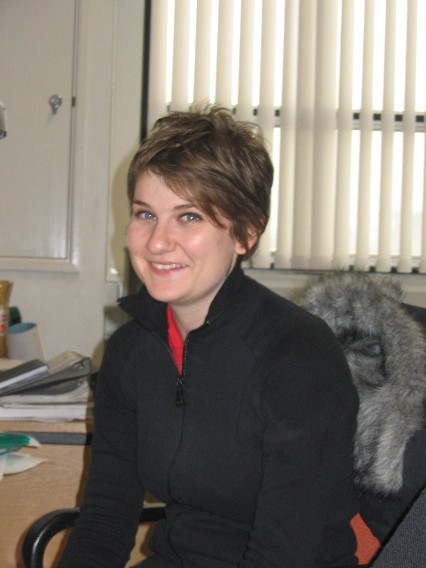|

Sarah
is a 3rd year PhD student studying micro-phase separating systems.
Although she uses a wide variety of characterization techniques her main
interest lies in SANS (small angle neutron scattering).
Reactions in Microphase Separating Surfactant Systems
It
is well known that fluorocarbon and hydrocarbon materials do not mix
[1]. This demixing
phenomenon (microphase separation) can be exploited in a system where
there is a partially fluorinated structure, such as a micelle, and a
solubilised hydrocarbon monomer [2].
The F-C within the micelle drives a local phase separation [3]
and this can be used to effect the polymerisation of the monomer,
leading to an interesting area of polymer templating.
A
matrix of systems of varying fluorination have been polymerised.
These polymerisations have been followed via 1H NMR
and SANS/SAXS and the final products imaged by TEM.
An
example of this work is the polymerisation of the microemulsion
comprising of the surfactant DHCF4 and the oil/monomer butylacrylate
(structures of both are given below). It can be seen from the SANS data below (obtained from the
LOQ instrument at ISIS) that the scattering profile of the microemulsion
before and after the polymerisation are very similar and therefore that
the structure of the micelle has been retained.
References.
[1]
P. Lo Nostro, Adv. Colloid Interfac. 56 (1995) 245
[2]
M-P. Krafft, et al., Langmuir 17 (2001) 2872
[3]
M. Ben Ghoulam, et al., Langmuir 12 (1996) 5048
|